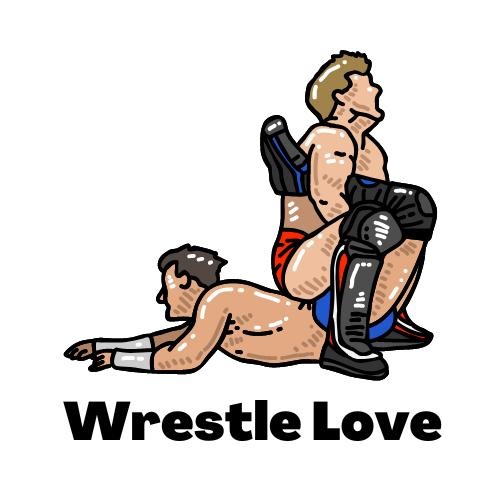Are you a fan of the world’s oldest form of competitive sport? Then you’ll love freestyle wrestling, an exciting style that combines power and agility with strategy and technique.
Whether you’re just starting or a seasoned veteran, this guide will help you understand the rules, scoring system, and different styles used in modern freestyle wrestling so that you can learn how to become an expert wrestler. Read on to see what makes freestyle wrestling unique among other forms of professional competition!
What are the rules in freestyle wrestling?
Freestyle wrestling is an exciting and challenging sport with a whole set of rules to follow. In general, each match starts in the neutral position, known as the Par Terre, with both wrestlers standing.
Once two points are scored by either wrestler, the uppermost wrestler in the Par Terre must continue to score for another two points. The other wrestler then tries to escape without giving up any more points.
As soon as one of them breaks contact or forces the other down on their back in a defensive position, they lose some of their accumulated points. No holds below the waist are allowed, but most legal moves include folkstyle moves like arm bars and leg trips. Other legal moves involve takedowns, reversals, and lift-and-carry techniques.
Additionally, wrestlers must obey particular restrictions (such as no biting and no striking). Wrestling is a smart sport that requires respect among competitors who abide by these strict rules.
Are you allowed to punch in freestyle wrestling?
Freestyle wrestling is a demanding sport that requires skill, strength, and endurance. Deciding whether or not you are allowed to punch in freestyle wrestling can be a difficult one for novice participants.
The answer largely depends on the association you’re competing under and the league’s specific rules. In general, it is considered an unsportsmanlike behavior to throw punches while in a wrestler’s position.
However, punching is not out of the ordinary in some freestyle tournaments designed as exhibition bouts or entertainment-based contests; they are usually lower-key and don’t count toward tournament brackets. Whether you are allowed to punch or not, it’s important to remember that self-control is one of the essential skills any wrestler needs if he hopes to come out victorious.
What moves are illegal in freestyle wrestling?
Freestyle wrestling requires skill and finesse, as well as knowing what moves are allowed and which are completely off-limits. Unnecessary roughness can result in a major violation in freestyle wrestling, including any move that causes punishment or harm to another wrestler’s head, face, throat, back, or spine. Wrestlers must also keep their feet flat on the surface at all times during the bout; otherwise, this is deemed illegal foot manipulation.
Additionally, using holds of an offensive nature such as choking is strictly prohibited. It’s also important to show respect to your opponent – any form of a coach or spectator interference results in an illegal motion penalty. Lastly, twisting the legs while on the bottom half, the guard is disallowed during freestyle wrestling competitions.
How do you score points in freestyle wrestling?
Scoring points is the primary objective of any wrestler in a match and freestyle wrestling is no exception. Wrestlers typically earn points by holding an offensive position for two seconds, attacking their opponents with successful takedowns or lifts off the mat, forcing a defensive position on their opponents, or executing strong counter-attacks on defensive actions made by their opponents.
Points can be awarded by executing different offensive and defensive moves such as trips and throws or punishing leg grabs. To prevent the opponent from scoring any points, it is also important to work on mastering your defending skills such as blocking your opposition’s advances and being able to quickly transition into a suitable reaction against sudden movement changes by your opponent.
Ultimately, it’s important to remember that staying active throughout the match will always keep you ahead of your opposition when it comes to scoring points in freestyle wrestling.
Are there escape points in freestyle wrestling?
Freestyle wrestling has a unique set of rules and strategies that make it an incredibly exciting and suspenseful sport to watch. One area of this thrilling form of competition that stands out is the concept of escape points.
In freestyle wrestling, an escape point is given to a wrestler when he or she successfully escapes their opponent’s hold, thus giving them an advantage in terms of score and controlling the match. This helps add excitement and unpredictability to bouts, as wrestlers are constantly scrambling to try and improve their positions, with the possibility of gaining or losing points at any time.
The ability to gain an extra point with an escape helps motivate wrestlers to be more aggressive than they otherwise might be in normal types of wrestling competitions. All in all, it’s a thrilling feature of freestyle wrestling, making every single situation full of potential drama and intrigue!
How many periods are in a freestyle wrestling match?
Freestyle wrestling is an exciting sport to watch and participate in. It varies from other forms of wrestling due to its fast pace, and of course, the fact that it allows a wrestler to use their arms as well.
When it comes to the number of periods in a freestyle match, it entirely depends on the type of tournament being held. Usually, there are three periods – two one-minute rounds followed by a sudden death round if no one has won at that point.
However, at larger tournaments or events there may be five or six total rounds depending on the rules set forth by the event organizers. Regardless of how many rounds are in a match, they can still be incredibly intense and captivating experiences for both wrestlers as well as spectators!
How do you win in freestyle wrestling?
Winning in freestyle wrestling requires a combination of dedication and the right strategy. A wrestler needs to maintain a strong physical condition, training regularly and using drills to become stronger physically and improve stamina.
At the same time, developing effective techniques is essential for getting an advantage over opponents. Having a good sense of timing, learning to recognize openings as quickly as possible, and setting up layers of strategy can give you the edge you need to come out on top.
Mental toughness is also important; being able to stay composed even when matches reach high-intensity levels is essential for always delivering the best performance. With all these elements, wrestlers have a much better chance of succeeding!
What are the 3 styles of wrestling?
Wrestling is a thrilling sport with a long history. Did you know there are three distinct styles of wrestling?
Greco-Roman wrestling prioritizes throws and no holds are allowed below the waist. Freestyle wrestling is similar but leg grabs and trips to the leg can be employed.
Finally, collegiate or folkstyle wrestling awards points for near-fall situations, which usually occur when one wrestler has their opponent nearly pinned to the mat. All of these versions of wrestling keep eyes glued to the mat as athletes compete for victory!
What is the freestyle type of wrestling?
Freestyle wrestling is a type of wrestling that combines the traditional techniques of classic wrestling with the more modern, athletic moves seen in contemporary international competitions.
Freestyle competition allows for attacking from different angles and positions, adding an exciting dynamic to the sport. This style also incorporates aerial maneuvers such as throws and takedowns as well as takedowns from standing positions and punishing pins – all aimed at taking control of your opponent.
Similarly, it can include colorful techniques like reversals and counters which are used to surprise and dominate opponents. For those looking for a thrilling bout between two athletes, freestyle wrestling may be the perfect sport for you!
What are some freestyle wrestling moves?
Freestyle wrestling is a fast-paced form of wrestling and requires incredible strength, speed, and athleticism. It consists of a variety of moves designed to gain control over your opponent.
These moves include the headlock, body lock, cross-body ride, fireman’s carry, double-leg takedown, and more. The goal is to gain control of your opponent either by pinning them to the ground or controlling them from standing.
To perform each move successfully, you need proper training and practice for accuracy and power. A good freestyle wrestler does not rely on any single technique but rather combines many different techniques with skillful execution to win the match.
Summary: What is freestyle wrestling: Rules, scoring, and styles
Freestyle wrestling is an energetic sport that requires physical contact, strength, and agility. It has many levels; from the beginner to the international competitor, each wrestler has the opportunity to challenge themselves and put their skills to the test.
Through this pursuit of excellence and self-improvement, these athletes can learn essential life lessons such as hard work and collaboration. The beauty of freestyle wrestling lies in its ability to make competitors out of opponents– it’s a game where both participants are winners due to the spirit of camaraderie and mutual respect.
Everyone involved should be mindful of appropriately following the various rules and styles while respecting their safety as well as their opponents. With so much fun packed into one sport, Freestyle Wrestling is sure to provide excitement for individuals looking for a unique activity!








